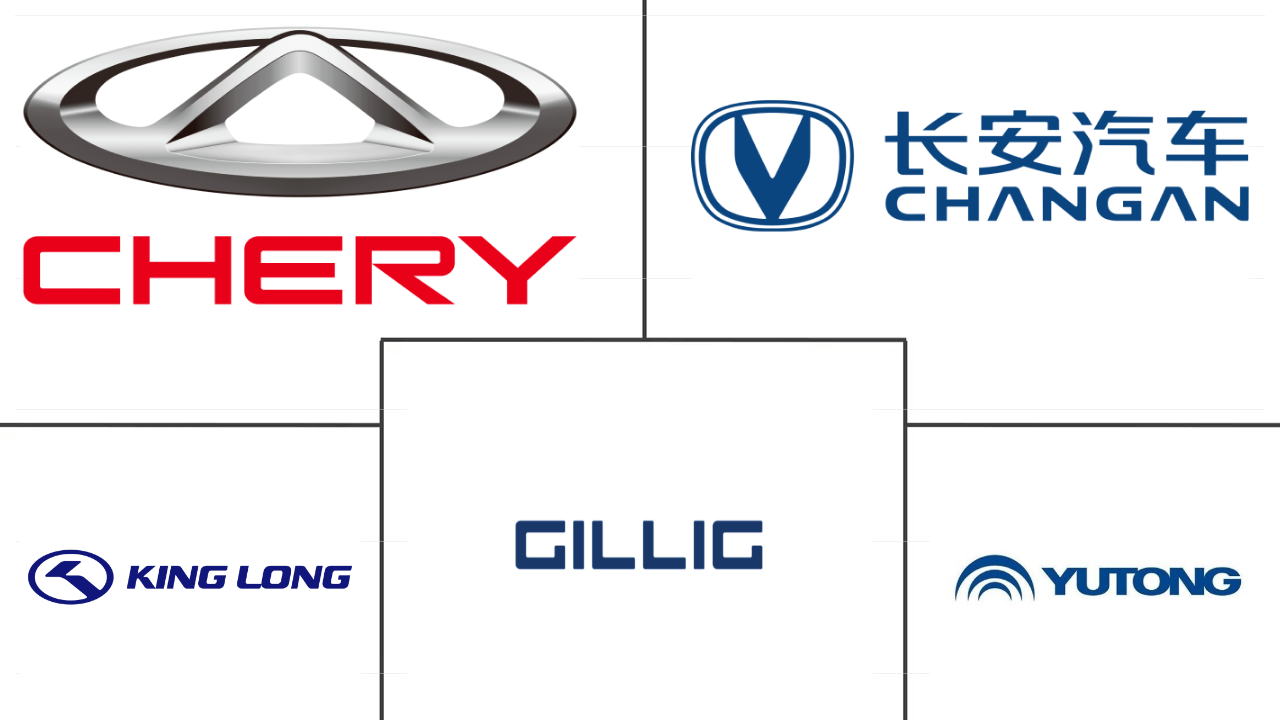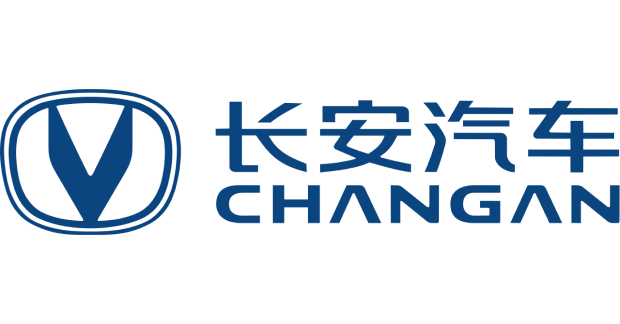Market Size of china electric bus Industry
|
|
Study Period | 2017 - 2030 |
|
|
Market Size (2024) | USD 35.46 Billion |
|
|
Market Size (2030) | USD 53.38 Billion |
|
|
Largest Share by Fuel Category | BEV |
|
|
CAGR (2024 - 2030) | 7.05 % |
|
|
Fastest Growing by Fuel Category | FCEV |
Major Players |
||

|
||
|
*Disclaimer: Major Players sorted in no particular order |
China Electric Bus Market Analysis
The China Electric Bus Market size is estimated at 35.46 billion USD in 2024, and is expected to reach 53.38 billion USD by 2030, growing at a CAGR of 7.05% during the forecast period (2024-2030).
35.46 Billion
Market Size in 2024 (USD)
53.38 Billion
Market Size in 2030 (USD)
13.05 %
CAGR (2017-2023)
7.05 %
CAGR (2024-2030)
Largest Segment by Fuel Category
95.80 %
value share, BEV, 2023
BEVs dominate China's electric bus market due to government subsidies, extensive urban demand, and a focus on reducing air pollution through sustainable public transport.
Fastest-growing Segment by Fuel Category
22.79 %
Projected CAGR, FCEV, 2024-2030
FCEVs are growing rapidly in China due to advancements in hydrogen technology, expanding refueling infrastructure, and strong governmental support for clean energy vehicles.
Leading Market Player
26.60 %
market share, Zhejiang Geely Holding Group Co. Ltd, 2023

Zhejiang Geely Holding Group Co. Ltd. leads the market with its innovative electric bus models, extensive manufacturing capacity, and strong government support for sustainable transportation solutions.
Second leading Market Player
13.50 %
market share, Chery Automobile Co. Ltd., 2023

Chery Automobile Co. Ltd. is a significant player due to its popular electric bus models, strong R&D capabilities, and commitment to expanding its electric vehicle offerings in the public transport sector.
Third Leading Market Player
11 %
market share, Chongqing Changan Automobile Company Limited, 2023

Chongqing Changan Automobile Company Limited ranks high in the market due to its diverse electric bus lineup, robust manufacturing infrastructure, and strategic collaborations enhancing its market position.
China aims for 80% NEV adoption in public vehicles by 2025, fueling electric bus market growth for emission cuts
- The Chinese electric bus market is expected to experience substantial growth, driven by a range of national and regional policies. These policies are designed to accelerate the adoption of new energy vehicles (NEVs), including electric buses. At the national level, China has initiated a pilot project to electrify public sector vehicles, with ambitious goals set for 2025. This project mandates that 80% of new buses, along with taxis, sanitation vehicles, postal services, and urban logistics vehicles, must be NEVs. This requirement is accompanied by an equal number of charging installations. This national policy underscores China's commitment to reducing carbon emissions in transportation and positioning electric mobility as a key pillar of its environmental strategy.
- At the regional level, several provinces and cities have introduced their own targets and measures to complement the national efforts. These regional initiatives reflect China's diverse and localized approach to achieving its broader goals of adopting electric vehicles (EVs). For example, regions like Shanxi, Shanghai, Guangxi, and Guangdong are aiming for approximately 40% of new energy and clean energy-powered transportation by 2030. Shanghai, in particular, has set a target to reach a peak in carbon emissions from urban transportation by the same year. These localized targets not only underscore the commitment of different regions to sustainable transport but also highlight the strategic significance of electric buses in China's urban mobility plans.
China Electric Bus Industry Segmentation
BEV, FCEV, HEV, PHEV are covered as segments by Fuel Category.
- The Chinese electric bus market is expected to experience substantial growth, driven by a range of national and regional policies. These policies are designed to accelerate the adoption of new energy vehicles (NEVs), including electric buses. At the national level, China has initiated a pilot project to electrify public sector vehicles, with ambitious goals set for 2025. This project mandates that 80% of new buses, along with taxis, sanitation vehicles, postal services, and urban logistics vehicles, must be NEVs. This requirement is accompanied by an equal number of charging installations. This national policy underscores China's commitment to reducing carbon emissions in transportation and positioning electric mobility as a key pillar of its environmental strategy.
- At the regional level, several provinces and cities have introduced their own targets and measures to complement the national efforts. These regional initiatives reflect China's diverse and localized approach to achieving its broader goals of adopting electric vehicles (EVs). For example, regions like Shanxi, Shanghai, Guangxi, and Guangdong are aiming for approximately 40% of new energy and clean energy-powered transportation by 2030. Shanghai, in particular, has set a target to reach a peak in carbon emissions from urban transportation by the same year. These localized targets not only underscore the commitment of different regions to sustainable transport but also highlight the strategic significance of electric buses in China's urban mobility plans.
| Fuel Category | |
| BEV | |
| FCEV | |
| HEV | |
| PHEV |
China Electric Bus Market Size Summary
The China Electric Bus Market is poised for significant expansion, driven by robust national and regional policies aimed at promoting the adoption of new energy vehicles (NEVs). The Chinese government has launched a comprehensive initiative to electrify public sector vehicles, mandating that a substantial portion of new buses and other vehicles like taxis and sanitation trucks be powered by NEVs by a set deadline. This initiative is part of China's broader strategy to reduce carbon emissions and enhance electric mobility as a cornerstone of its environmental policy. Regional efforts in provinces and cities such as Shanghai, Guangxi, and Guangdong further support these national goals, with specific targets for increasing the share of clean energy-powered transportation. These efforts are complemented by government programs encouraging the transition to green vehicles, including a ban on fossil fuel vehicles by a future date and the reintroduction of subsidies to boost electric vehicle sales.
The market landscape is moderately consolidated, with major players like Chery Automobile, Chongqing Changan, King Long United Automotive, Zhejiang Geely Holding, and Zhengzhou Yutong Bus Co. Ltd. dominating the sector. These companies are actively expanding their electric vehicle offerings in response to growing demand. For instance, General Motors has significantly increased its investment in electric and autonomous vehicles, planning to launch numerous new models in China. The market's growth trajectory is further supported by strategic partnerships and international expansions, as evidenced by Yutong's recent export activities and collaborations to advance new energy logistics transportation. These developments underscore the strategic importance of electric buses in China's urban mobility framework and the country's commitment to leading the global transition to sustainable transport solutions.
China Electric Bus Market Size - Table of Contents
-
1. MARKET SEGMENTATION (includes market size in Value in USD and Volume, Forecasts up to 2030 and analysis of growth prospects)
-
1.1 Fuel Category
-
1.1.1 BEV
-
1.1.2 FCEV
-
1.1.3 HEV
-
1.1.4 PHEV
-
-
China Electric Bus Market Size FAQs
How big is the China Electric Bus Market?
The China Electric Bus Market size is expected to reach USD 35.46 billion in 2024 and grow at a CAGR of 7.05% to reach USD 53.38 billion by 2030.
What is the current China Electric Bus Market size?
In 2024, the China Electric Bus Market size is expected to reach USD 35.46 billion.

